


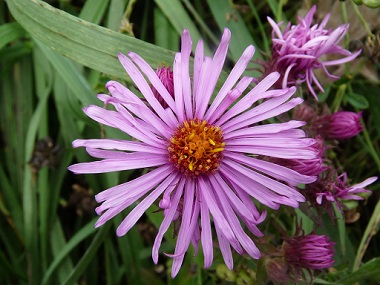
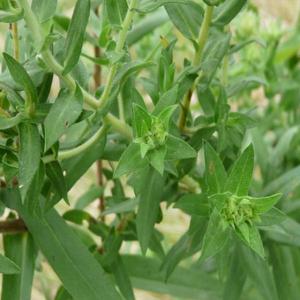
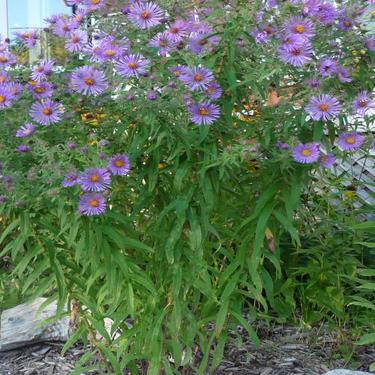
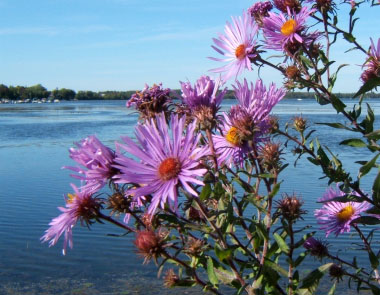
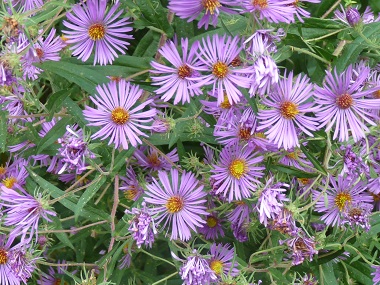
To support our efforts please browse our store (books with health benefits, etc.).
Considered an aggressive weed by some people, the New England aster is prized for its attractive flowers. It is very popular for bees collecting nectar and Monarch butterflies are attracted to the flower of this plant as it provides an important source of late season nectar. Interestingly, the flower of this plant was used in a love medicine by the Iroquois (First Nations). The New England aster blooms from August to October and grows in abundance adding vibrant colour to the autumn landscape. In home gardens it grows best in sunny locations.
Distinguishing Features
New England asters have large rose-purple flowers, with numerous rays. It has clasping leaves and a rough stem that has several branches reaching out.
Flowers
Large rose-purple flowers with numerous rays. The centre of the flower is yellow. Flower heads cluster at the ends of the branches 2-5 cm wide, consisting of 50-75 flowers.
 Fields
of Nutrition has medicinal benefits and vitamin/mineral content of New England Aster.
Fields
of Nutrition has medicinal benefits and vitamin/mineral content of New England Aster.
Leaves
Clasping leaves and a rough stem. The aster plant has three prominent veins. Lower leaves have usually disappeared by flowering time. Leaves are toothless.
Height
Grows to an average height of 120 cm but can get as tall as 2 metres.
Habitat
Open areas, wet thickets, swamps, and fields all over Ontario and most of Canada and in the U.S.
Edible Parts
The root has been used for centuries in Chinese medicines. The flower and leaves are also reported to provide health benefits. Flowers can be eaten fresh and added to a salad as can the leaves. When harvesting in September or early October be sure the plant is dry (dew is gone) and cut stem about 10 cm above the ground. Hang upside down in a cool, dark location until totally dried (crumbles easily). Most of the flowers will become white and fluffy but they can still be used. Add dried plant to salads, main dishes or make a cup of tea.
Similar Plants
Amethyst Aster, Purple-Stemmed Aster.
Winter Survival Food Handbook

PDF Plant Magazines
Types of Wild Food
Geographic Zones Seasons
Disclaimer
EdibleWildFood.com is informational in nature. While we strive to be 100% accurate, it is solely up to the reader to ensure proper plant identification. Some wild plants are poisonous or can have serious adverse health effects.
We are not health professionals, medical doctors, nor are we nutritionists. It is up to the reader to verify nutritional information and health benefits with qualified professionals for all edible plants listed in this web site. Please click here for more information.
Why Edible Wild Food?
- Food costs are rising
- Free, wild food is readily abundant
- Wild food adds nutrition to your diet
- Wild food can help treat various medical conditions





